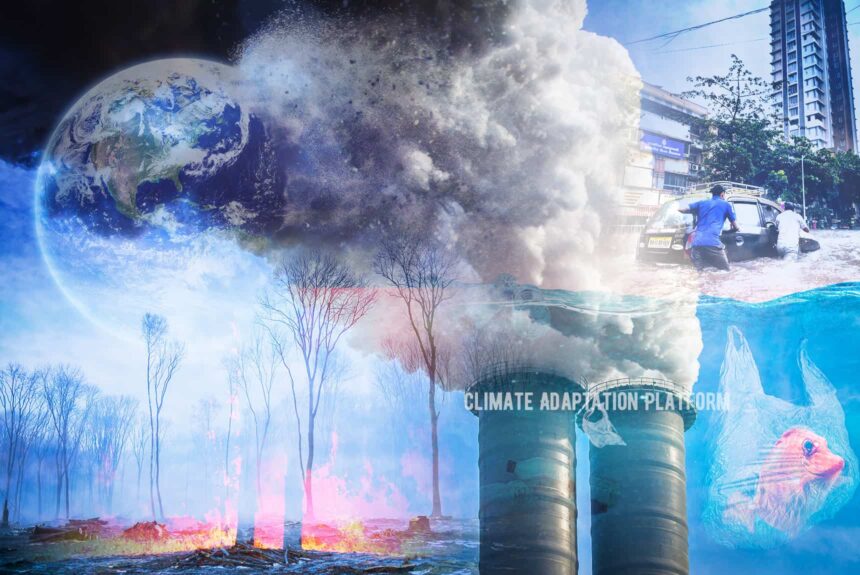Scientists have made it clear that keeping the global average temperature rise within 1.5°C since pre-industrial times is critical to preventing climate change’s worst and cascading impacts. However, hitting the Paris Agreement temperature limit is now becoming arbitrary and unachievable by 2030 (McGuire, 2022).
The 1.5°C has attracted attention again because of the recently published study, “Exceeding 1.5°C global warming could trigger multiple climate tipping points“. Researchers revealed that the continuing global warming might bring the world on the brink of multiple “disastrous” tipping points.
Climate tipping points (CTPs) are a source of growing scientific, policy, and public concern. They occur when a change in large parts of the climate system—known as tipping elements—becomes self-perpetuating beyond a warming threshold.
The analysis shows that even with global warming of 1°C, a threshold that we already have passed puts us at risk by triggering some tipping points. This finding provides a compelling reason to limit additional warming as much as possible.
Carington (2022) discusses the findings of the study:
- “It shows five dangerous tipping points may already have been passed due to the 1.1°C of global heating caused by humanity to date.”
- “These include the collapse of Greenland’s ice cap, eventually producing a huge sea level rise, the collapse of a key current in the north Atlantic, disrupting rain upon which billions of people depend for food, and an abrupt melting of carbon-rich permafrost.”
- “At 1.5°C of heating, the minimum rise now expected, four of the five tipping points move from being possible to likely, the analysis said. Also, at 1.5°C, an additional five tipping points become possible, including changes to vast northern forests and the loss of almost all mountain glaciers.”
- “In total, the researchers found evidence for 16 tipping points, with the final six requiring global heating of at least 2°C to be triggered. The tipping points would take effect on timescales varying from a few years to centuries.”
- ” The researchers concluded, “The Earth may have left a ‘safe’ climate state beyond 1°C global warming,” the whole of human civilisation developed in temperatures below this level. Passing one tipping point is often likely to help trigger others, producing cascades. But this is still being studied and was not included, meaning the analysis may present the minimum danger.”
The research article, “Exceeding 1.5°C global warming could trigger multiple climate tipping points”, concludes:
“Our assessment provides strong scientific evidence for urgent action to mitigate climate change. We show that even the Paris Agreement goal of limiting warming to well below 2°C and preferably 1.5°C is not safe as 1.5°C and above risks crossing multiple tipping points. Crossing these CTPs can generate positive feedbacks that increase the likelihood of crossing other CTPs. Currently, the world is heading toward ~2 to 3°C of global warming; at best, if all net-zero pledges and nationally determined contributions are implemented, it could reach just below 2°C. This would somewhat lower tipping point risks but still, be dangerous as it could trigger multiple climate tipping points.”
Watch the video to know more about what will happen to the world if we pass some climate tipping points:
Source:
McGuire, B. (2022, September 12). Why we should forget about the 1.5°C global heating target. The Guardian. Retrieved from https://www.theguardian.com/commentisfree/2022/sep/12/global-heating-fighting-degree-target-2030
Carrington, D. (2022, September 8). World on brink of five ‘disastrous’ climate tipping points, study finds. The Guardian. Retrieved from https://www.theguardian.com/environment/2022/sep/08/world-on-brink-five-climate-tipping-points-study-finds
Armstrong McKay, D. I., Staal, A., Abrams, J. F., Winkelmann, R., Sakschewski, B., Loriani, S., Fetzer, I., Cornell, S. E., Rockström, J., & Lenton, T. M. (2022). Exceeding 1.5°C global warming could trigger multiple climate tipping points. Science (New York, N.Y.), 377(6611), eabn7950. https://doi.org/10.1126/science.abn7950
What will Earth Look Like When These 6 Tipping Points Hit? (2022 September 7). PBS Terra. [Video file]. Retrieved from https://www.youtube.com/watch?v=MBKZWKeKYqE



Leave a Reply